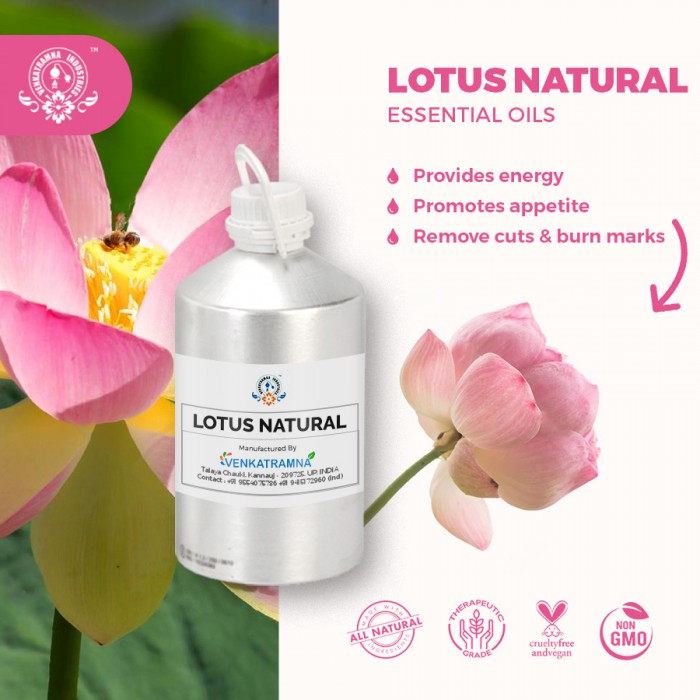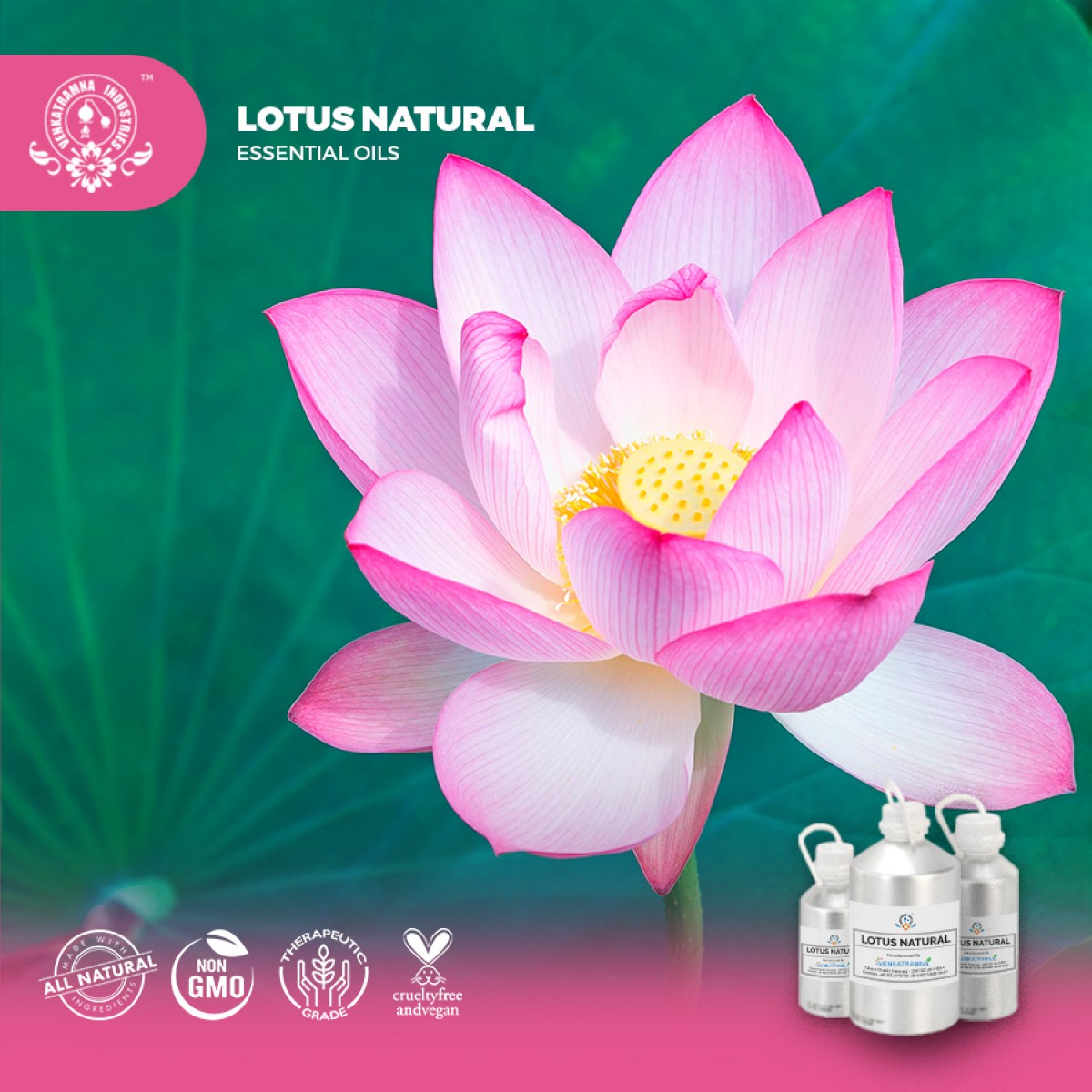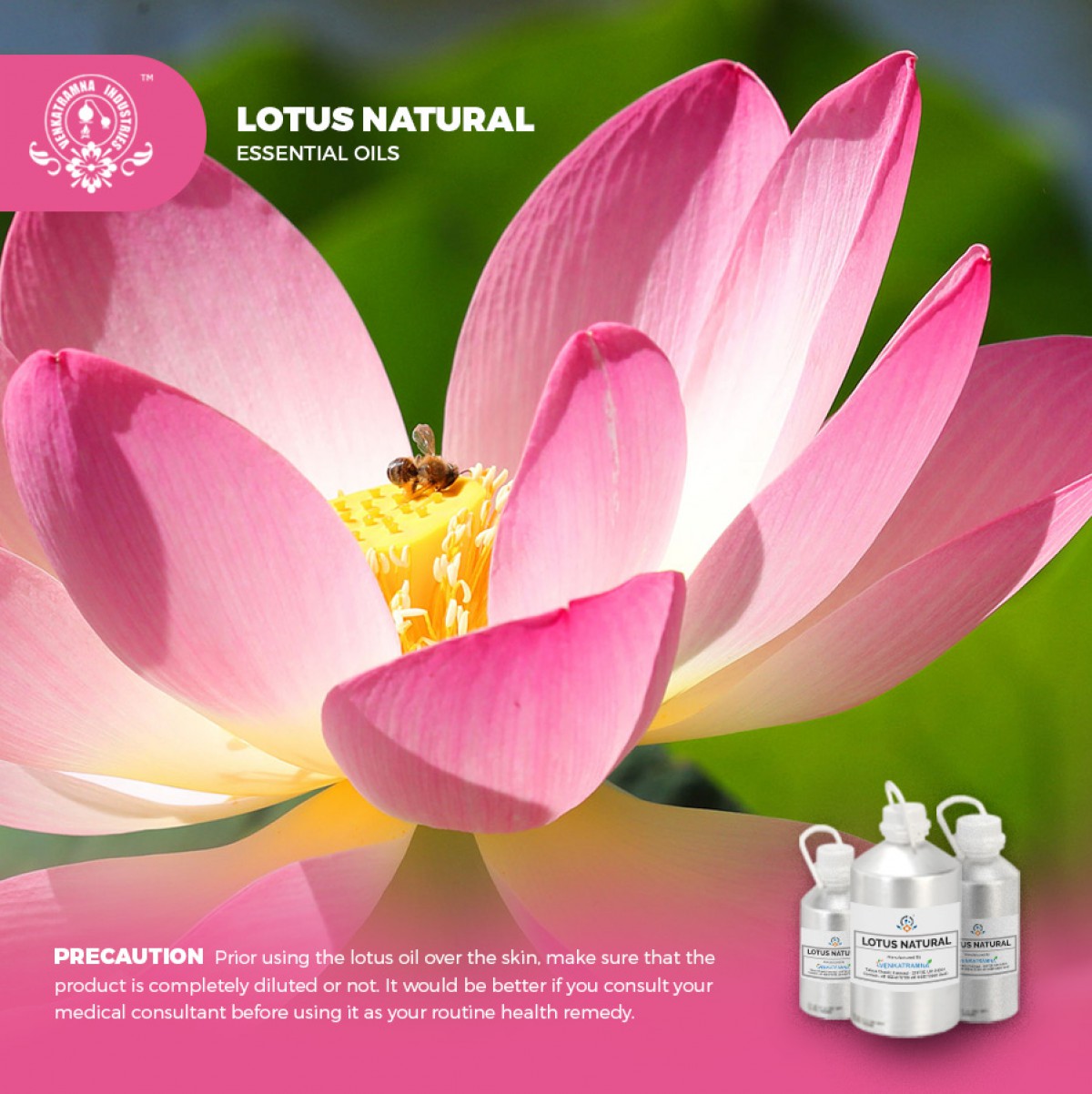Botanical Name: Nelumbo Nucifera Common name: Indian lotus, sacred lotus, bean of I Read More
|
Botanical Name: |
Nelumbo
Nucifera |
|
Common name: |
Indian lotus, sacred lotus, bean of India, Egyptian bean,
Pundarika |
|
Plant
family: |
Nelumbonaceae |
|
Genus: |
Nelumbo |
|
Appearance/Color: |
A viscous concentration with a yellow-orange to reddish
color. |
|
Odor: |
The lotus oil comes with an exotic floral fragrance which
sometimes feels slightly medicinal & herbaceous. |
|
Blends With: |
Cinnamon, sandalwood, and all spice essential oils. |
|
Origin: |
India, Tamilnadu |
|
Source: |
Flower |
|
Method
of Extraction: |
Steam Distillation |
Nelumbo nucifera is
commonly called sacred lotus about the sacred and symbolic status the flower
holds in Buddhism and Hinduism. It is native to Asia and Australia. It is a
large-flowered lotus that typically grows 3-6’ tall in shallow water and
spreads by thickened rhizomes rooted in the mud. This is a marginal aquatic
perennial that features rounded, parasol-like, upward-cupped, waxy green leaves
(to 2’ across) that appear above the water on long petioles which attach at the
middle of the leaf underside (peltate). Large, cupped, fragrant, pink or white
flowers (8-12” diameter) appear in summer on stiff stems above the foliage.
Each flower blooms for about three days, opening in the morning and closing at
night each day. Flowers are followed by nut-like fruits that are imbedded in
the flat surface of a turbinate (inversely conical) receptacle (2-3” diameter)
which resembles the shape of a watering can rose. Receptacles acquire a woody
texture when dried (suggestive of wasps’ nests) and are highly prized for dried
flower arrangements. The rhizomes, leaves and seeds of lotus are edible and are
sometimes used in Asian cooking.
Lotus essential oil is extracted from the petals of lotus flower by precisely using steam distillation method. Due to the high-quality and longer shelf life, we have become the prominent manufacturer and exporter of Lotus oil in the industry. In our small bottles, one can find the way to live naturally and also without diseases. As the authentic name in the market, we make sure that not even a single individual get deprived of such natural and 100% pure health enhancement remedies.
DISCLAIMER
The complete range of conditions
or methods of use are beyond our control therefore we do not assume any
responsibility and expressly disclaim any liability for any use of this
product. Information contained herein is believed to be true and accurate however,
all statements or suggestions are made without warranty, expressed or implied,
regarding accuracy of the information, the hazards connected with the use of
the material or the results to be obtained from the use thereof. Compliance
with all applicable federal, state, and local laws and local regulations
remains the responsibility of the user.
The FDA has not evaluated the
statements on this website. No claims are made by Venkatramna Industries as to
the medicinal value of any products from vriaroma.com or by us. The information
presented here is for educating our customers about the traditional uses of
essential oils and is not intended to diagnose, treat, cure, or prevent any
disease. You are responsible for understanding the safe application of these products.
If you have any questions, please call or email us for further information.
As per NAHA guidelines, New Directions Aromatics (NDA) does not recommend the ingestion of essential oils. It is imperative to consult a medical practitioner before using Essential Oils for therapeutic purposes. Pregnant and nursing women and those taking prescription drugs are especially advised not to use this product without the medical advice of a physician. The oil should always be stored in an area that is inaccessible to children, especially those under the age of 7.
All parts of N.
nucifera have been used for various medicinal purposes in various systems
of medicine including folk medicines, Ayurveda, Chinese traditional medicine,
and oriental medicine. Many chemical constituents have been isolated till the
date. However, the bioactive constituents of lotus are mainly alkaloids and
flavonoids.
Traditionally,
the whole plant of lotus was used as astringent, emollient, and diuretic. It
was used in the treatment of diarrhea, tissue inflammation, and homeostasis.
The rhizome extract was used as antidiabetic and anti-inflammatory properties due
to the presence of asteroidal triterpenoid. Leaves were used as an effective
drug for hematemesis, epistaxis, hemoptysis, hematuria, and metrorrhagia.
Flowers were used to treat diarrhea, cholera, fever, and hyperdipsia. In
traditional medicine practice, seeds are used in the treatment of tissue
inflammation, cancer and skin diseases, leprosy, and poison
antidote. Being a good component used for therapeutic purpose, it reduces
stress and provides deep relaxation to the
mind and soul. Along with bringing calmness, it also treats many body disorders
including blood circulation, digestive tracts, etc.
These days’ different parts of
lotus have been consumed as functional foods. Thus, lotus can be regarded as a
potential nutraceutical source. In natural perfumery used in
sacred perfumes, Oriental bouquets, fougere, chypre, amber bases, high
class florals.
COMMON
USAGE
·
Improves
skin texture
·
Acts
as anti-aging formula
·
Contains
astringent properties
·
Improves
concentration
·
Calms
nervous system
·
Boosts
blood circulation
·
Soothes
& moisturizes skin
·
Provides
energy
·
Promotes
appetite
·
Best
to remove cuts & burn marks
Ingredients:
The
essential is rich in five types of active flavonoids.
·
Flavonoids
are a ubiquitous group of naturally occurring polyphenolic compounds
characterized by the flavan nucleus and represent one of the most prevalent
classes of compounds in fruits, vegetables and plant-derived beverages.
·
More
than 8000 compounds with flavonoids structure have been identified, many of
which are responsible for the attractive colors of flowers, fruits and leaves.
In plants, these compounds afford protection against ultraviolet radiation,
pathogens, and herbivores.
·
Flavonoids
are considered as health promoting and disease preventing dietary supplements.
Epidemiological, clinical and animal studies reveal that flavonoids may exert
protective effects against various disease conditions including cardiovascular
disease and cancer.
·
Flavonoids
also possess antibacterial, antiviral, and anti-inflammatory effects.
Population studies have shown that flavonoid intake is inversely correlated
with mortality from cardiovascular disease.
·
Flavonoids
have been reported to beneficially impact parameters associated with
atherosclerosis, including lipoprotein oxidation, blood platelet aggregation,
and vascular reactivity. Antioxidant, antithrombotic, anti-inflammatory, and
hypolipidemic properties are illustrated to play a significant role in the
lower cardiovascular mortality observed with higher flavonoid intake. Thus
recently flavonoids are the focus of much current nutritional and therapeutic
interest.
Safety Summary
·
Hazards:
Not Known
·
Acute toxicity: No data available
·
Skin corrosion/irritation: May be
irritating to skin.
·
Serious eye damage/irritation: May be
irritating to eyes. Prompt rinsing and removal of the substance will avoid
damage
·
Respiratory sensitization: Breathing high
concentrations of vapor may cause anesthetic effects.
·
Germ cell mutagenicity: Not specified
·
Carcinogenicity:
o IARH:
No component of this product present at levels greater than or equal to 0.1% is
identified as probable, possible or confirmed human carcinogen by IARC.
o ACGIH:
No component of this product present at levels greater than or equal to 0.1% is
identified as probable, possible or confirmed human carcinogen by IARC.
o NTP:
No component of this product present at levels greater than or equal to 0.1% is
identified as probable, possible or confirmed human carcinogen by IARC.
o OSHA:
No component of this product present at levels greater than or equal to 0.1% is
identified as probable, possible or confirmed human carcinogen by IARC.
·
Reproductive toxicity: Not specified
·
STOT-single exposure: Not specified
·
STOT-related exposure: Not specified
·
Aspiration hazard: Not specified
·
Information on the likely routes of exposure:
Skin/scalp contact.
·
Symptoms related to the physical, chemical,
and toxicological characteristics: None known. Irritation of the eye if
exposed. Redness of the skin if irritated.
Toxicity
·
Acute fish toxicity: LC50 / 96 HOUR – No
data available
·
Toxicity to aquatic plants – No data
available
·
Toxicity to microorganisms – No data
available
·
Toxicity threshold – No data available
·
Persistence and degradability:
Biodegradation is expected
·
Bio-accumulative potential Bioaccumulation is
unlikely
·
Mobility in soil: Unknown
·
Avoid exposure to marine environments and waterways
Oli biswas - 09 Aug 2022
4Praveen tandon - 16 Aug 2022
Smell is Nice,




 MSDS-Lotus.pdf
MSDS-Lotus.pdf





Ashish sharma - 14 Jun 2022
Quality is Fine